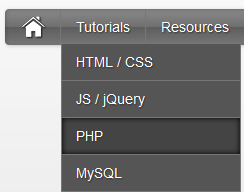Five Tips to Write a Successful Blog Post
A blog post is worthless if the reader clicks off after reading a few sentences. But with nothing more than a few paragraphs of text, how can a writer truly connect with an audience? Often, through improving their blogging style, decent writers can transform into amazing writers and build audiences that keep coming back for more. These tips will help writers kick their blog writing skills up a notch, making them better able to connect with their target audiences.

Improve the Tone
Blogging is an excellent medium to connect with an audience, yet it can also be greatly abused by those who know nothing about writing. Because anyone with basic computer skills can put up a blog post, readers often find poor writing and are turned away from a particular post. Bloggers who want to make a good first impression on their readers can do so through well-crafted pieces. Those who need additional help to hone their writing skills can consider taking online classes in creative writing.
Proofread, Proofread, Proofread!
One simple typo can turn a blog post from something informative and helpful to something laughable. Proofreading may seem tedious, and it’s certainly not the most exciting part of the writing process, but it must be done. Bloggers need to proofread everything they post at least twice, and they may want to have someone else read through it once as well to be certain they have caught everything.
One way to proofread more successfully is to read the post out loud. Often, when a writer reads his or her work aloud, or has someone else do so, poor wording or confusing sentence structure pops off of the screen. Blog posts should be conversational and easy to understand, so reading them aloud can shed light on sections of text where the wording is awkward and detracts from the message.
Create a Killer Opening Sentence
Internet readers often skim an article to determine its worth before actually reading it. The opening sentence of a blog post needs to hook the reader. A great lead sentence will compel the reader to read the entire post. A good opening sentence will ask a question, use a statistic, present a quote, make a claim or tell a story. Spending time on that opening sentence is always a wise idea when writing a blog post.
Write Short Paragraphs
Blog writing is different than academic writing in that readers have different expectations. When writing a paper for a college professor, long, carefully crafted paragraphs are expected. This is not the case with blogging.
Readers prefer short, crisp paragraphs. Now, this doesn’t mean the paragraphs shouldn’t be structured well. It does mean, however, that the paragraphs need to be short and to the point. This also helps make the article easy to scan, which is beneficial to online readers.
Part of the reason this is important is that reading on a screen is harder on the eyes than reading on paper. Whereas a reader might be willing and able to persevere through a long paragraph in print, online it just serves to make the reader feel tired. This often translates into the reader clicking away from the blog post.
Focus on One Topic
Blog writing is a bit more informal than other types of writing, but that can be detrimental. Bloggers can too easily slip into rambling, and a long-winded, aimless post is boring to read. Writers who keep their posts focused on one particular concept or main thought will have a better chance of connecting with their readers.
When it comes to writing a blog post, clarity and brevity will keep readers interested. Add to that a grammatically accurate post that is thoroughly proofread and has a winning opening sentence, and the writer will succeed in connecting with the reader within just a few paragraphs of text.
Lindsey Harper Mac is a professional writer living in the Indianapolis area. She specializes in writing guest posts on social media and education on behalf of Colorado Technical University. Currently, Lindsey is completing work on her master’s degree.





